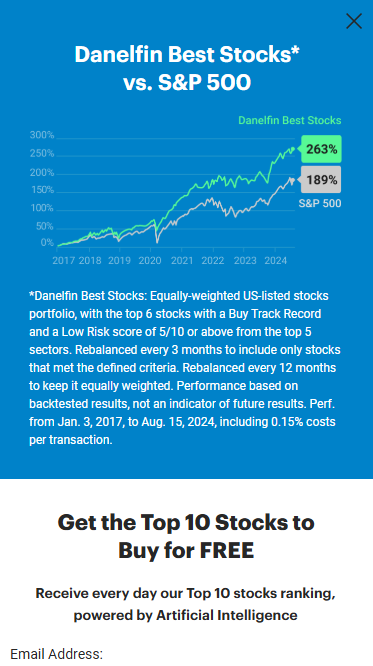20 Recommended Reasons To Selecting AI Stock Trading Platform Websites
20 Recommended Reasons To Selecting AI Stock Trading Platform Websites
Blog Article
Top 10 Suggestions For Looking At Ai And Machine Learning Models On Ai Stock Trading Platforms
It is important to assess the AI and Machine Learning (ML) models that are utilized by stock and trading prediction platforms. This will ensure that they provide accurate, reliable and actionable information. Incorrectly designed or overhyped model could result in financial losses as well as flawed predictions. Here are 10 top strategies for evaluating AI/ML models for these platforms.
1. Learn about the goal and methodology of this model
The goal must be determined. Make sure the model has been developed to be used for long-term investment or short-term trading.
Algorithm transparency - Look to determine if there are any public disclosures regarding the algorithms (e.g. decision trees neural nets, neural nets, reinforcement learning etc.).
Customizability: Determine whether the model can adapt to your particular strategy of trading or risk tolerance.
2. Analyze model performance indicators
Accuracy - Check the model's prediction accuracy. Don't base your decisions solely on this metric. It can be misleading regarding financial markets.
Recall and precision: Determine the accuracy of the model to discern real positives, e.g. correctly predicted price fluctuations.
Risk-adjusted Returns: Determine the model's predictions if they yield profitable trades taking risk into consideration (e.g. Sharpe or Sortino ratio).
3. Test the model using backtesting
Historical performance: Use historical data to backtest the model and assess how it would have performed in the past under market conditions.
Testing with data that is not the sample is essential to avoid overfitting.
Scenario analysis: Assess the model's performance in different market conditions.
4. Make sure you check for overfitting
Overfitting signs: Look for overfitted models. They are the models that perform extremely good on training data but less well on unobserved data.
Regularization methods: Check if the platform uses methods like regularization of L1/L2 or dropout to avoid overfitting.
Cross-validation (cross-validation) Check that your platform uses cross-validation to assess the model's generalizability.
5. Examine Feature Engineering
Relevant Features: Look to determine if the model has meaningful features. (e.g. volume prices, price, technical indicators and sentiment data).
Features selected: Select only those features which are statistically significant. Do not select redundant or irrelevant information.
Updates to dynamic features: Determine whether the model is adjusting in time to new features or changes in market conditions.
6. Evaluate Model Explainability
Interpretability (clarity) It is important to ensure that the model is able to explain its predictions clearly (e.g. the value of SHAP or the importance of features).
Black-box model Beware of platforms that employ models that are overly complex (e.g. deep neural networks) without describing the tools.
User-friendly insights : Determine if the platform offers actionable data in a format that traders can use and understand.
7. Examining the Model Adaptability
Market changes: Check whether your model is able to adjust to market fluctuations (e.g. new regulations, economic shifts or black-swan events).
Examine if your platform is updating its model regularly with the latest information. This will increase the performance.
Feedback loops. Make sure that your model takes into account feedback from users and real-world scenarios to improve.
8. Be sure to look for Bias in the elections
Data bias: Ensure that the data used for training is accurate to the market and free of biases.
Model bias: Ensure that the platform is actively monitoring biases in models and minimizes them.
Fairness: Check that the model does favor or disfavor specific types of stocks, trading styles or even specific segments.
9. Evaluation of the computational efficiency of computation
Speed: Determine if a model can produce predictions in real time with the least latency.
Scalability: Find out whether a platform is able to handle many users and huge datasets without performance degradation.
Utilization of resources: Ensure that the model has been optimized to make efficient use of computational resources (e.g. GPU/TPU usage).
Review Transparency & Accountability
Model documentation. You should have an extensive description of the model's design.
Third-party Audits: Determine if the model has been independently audited or validated by third organizations.
Verify if there is a mechanism in place to detect errors and failures of models.
Bonus Tips:
User reviews and case study User feedback and case studies to gauge the performance in real-life situations of the model.
Trial period: Try the software for free to determine the accuracy of it and how simple it is to utilize.
Customer Support: Make sure that the platform offers solid technical or model-specific support.
These tips will help you evaluate the AI and machine-learning models employed by platforms for prediction of stocks to ensure they are reliable, transparent and compatible with your trading goals. View the top rated best ai trading app hints for website advice including ai for investing, ai stock, chart ai trading assistant, ai chart analysis, investment ai, chart ai trading assistant, options ai, ai for stock predictions, best ai trading software, incite and more.
Top 10 Suggestions For Evaluating The Reputation, Reviews And Evaluations Of Ai Stock Trading Platforms
Assessing the reputation and reviews of AI-driven stock prediction systems and trading platforms is crucial to ensure reliability, trustworthiness and efficiency. Here are 10 suggestions for evaluating their reviews and reputation:
1. Check Independent Review Platforms
Find reviews on reliable platforms, like G2, copyright and Capterra.
Why independent platforms are unbiased and provide feedback from actual users.
2. Study user testimonials and cases studies
Tips: Read testimonials from users and case studies on the platform's site or third-party sites.
Why? These reports offer details on performance in the real world as well as user satisfaction.
3. Review Expert Opinions on Industry Recognition
Tips - Find out whether reputable magazines, analysts from industry and financial analysts have reviewed or recommended a platform.
What's the reason? Expert endorsements provide an air of credibility for the platform.
4. Social Media Sentiment
TIP: Keep an eye on social media platforms such as Twitter, LinkedIn and Reddit to see what other users have to say about them.
What's the reason? Social media gives an unfiltered view of trends and opinions in the world of social media.
5. Verify Compliance with Regulatory Regulations
Tip: Make sure the platform is in compliance not only with privacy laws, but also financial regulations.
The reason: Compliance is essential in order to make sure that the platform is operating legally and ethically.
6. Seek out Transparency in Performance Metrics
TIP: Find out if the platform provides transparent performance metrics like the accuracy of rates, ROI and backtesting results.
Transparency helps build trust and allows users to evaluate the effectiveness of a platform.
7. Be aware of the quality of service provided by customers.
Tips: Read user reviews on the support system's efficiency and effectiveness.
Why? Reliable support is vital to resolve any issue and giving customers a great experience.
8. Look for Red Flags in Reviews
Tip Look for repeated complaints. This could be due to unsatisfactory performance, hidden costs or the inability to update.
Consistently bad feedback indicates that there could be a problem in the system.
9. Examine community and user engagement
Tips Make sure the platform has a vibrant community of users (e.g. Discord, forums), and that it is active with its members.
Why strong communities are a sign of that users are satisfied and continue to show support.
10. Check the company's track record
Review the company's history along with the leadership team, as well as its past performance within the space of financial technology.
Why? A track record with proven record increases trust and confidence in the platform.
Compare Multiple Platforms
Compare the ratings and reputations of various platforms to identify which one is the most appropriate to your needs.
With these suggestions, you can thoroughly assess the reputation and reviews of AI trading and stock prediction platforms, ensuring you choose an efficient and reliable solution. Follow the top cool training for stock predictor for site examples including ai stock prediction, ai for trading stocks, how to use ai for stock trading, ai stock predictions, ai investment tools, ai tools for trading, ai options trading, ai stock price prediction, ai trading tool, chart ai trading and more.